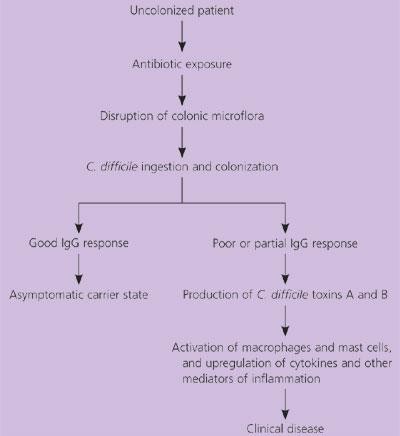A nurse is assessing a client who has increased intracranial pressure (ICP). The nurse should recognize that which of the following is the first sign of deteriorating neurological status?
Pupillary dilation
Decorticate posturing
Altered level of consciousness
Cheyne-Stokes respirations
The Correct Answer is C
Altered level of consciousness (LOC) is the earliest and most sensitive indicator of increased ICP, which can result from brain injury, tumor, hemorrhage, infection, or edema.
The nurse should monitor the client's LOC using the Glasgow Coma Scale (GCS) and report any changes or deterioration to the provider. Pupillary dilation, decorticate posturing, and Cheyne-Stokes respirations are later signs of increased ICP that indicate brainstem compression and herniation, which are life-threatening emergencies.
Nursing Test Bank
Naxlex Comprehensive Predictor Exams
Related Questions
Correct Answer is A
Explanation
Clostridium difficile is a spore-forming bacteria that can cause severe diarrhea and other gastrointestinal symptoms. It's highly contagious and can easily spread to other patients.Alcohol-based hand rubs are not effective against spores and should not be used for hand hygiene in this case. Chlorhexidine is also not sporicidal and should not be used for environmental cleaning. A protective environment is indicated for clients who are at risk of infection from others, not for clients who are infectious to others.Gloves are important for preventing the spread of infection, but they should be used in conjunction with other infection control measures, such as handwashing and protective isolation.

Correct Answer is A
Explanation
A history of inflammatory bowel disease, such as Crohn's disease or ulcerative colitis, is a risk factor for colorectal cancer . These conditions cause chronic inflammation and damage to the cells lining the colon and rectum, which may increase the likelihood of DNA mutations and cancer development. A diet high in fiber may help lower the risk of colorectal cancer by promoting regular bowel movements and reducing exposure to toxins. Age 46 years is not a significant risk factor, as most cases of colorectal cancer occur in people older than 50. BMI of 24 is within the normal range and does not indicate obesity, which is another risk factor for colorectal cancer.

Whether you are a student looking to ace your exams or a practicing nurse seeking to enhance your expertise , our nursing education contents will empower you with the confidence and competence to make a difference in the lives of patients and become a respected leader in the healthcare field.
Visit Naxlex, invest in your future and unlock endless possibilities with our unparalleled nursing education contents today
Report Wrong Answer on the Current Question
Do you disagree with the answer? If yes, what is your expected answer? Explain.
Kindly be descriptive with the issue you are facing.
